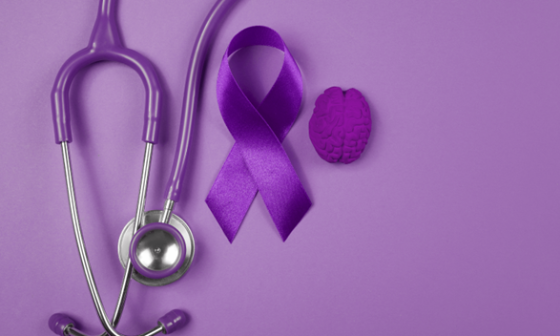Introduction
AIDS (acquired immune deficiency syndrome) and HIV (human immunodeficiency virus) are two of the biggest threats to world health. Since the discovery of HIV in the early 1980s, the illness has impacted millions of individuals worldwide.
HIV weakens the immune system, making the body incapable of fending off illness and infection. It may take years for HIV to impair immune function to the point where AIDS develops if treatment is not received, however, HIV/AIDS still has an impact on people’s lives despite improvements in prevention, education, and treatment, particularly in sub-Saharan Africa, which is still the most impacted area.

This article discusses HIV and AIDS, how they spread, symptoms to watch out for and preventive measures to take in order to protect yourself against the disease.
What is HIV?
Human Immunodeficiency Virus (HIV) is a virus that targets the body’s defences against infections (immune system), particularly the CD4 cells (T cells) in the immune system. If left untreated, the virus may damage many of these cells, compromising the immune system, and making it more difficult for the body to fight against infections, illnesses, and tumors.
HIV remains in the body for life because, unlike many other viruses, it is not fully eliminated by the body. HIV may, however, be controlled using drugs and people infected with the virus can live long, healthy lives with the right care.
What is AIDS?
The latter stage of HIV infection is known as AIDS. Acquired immunodeficiency syndrome (AIDS) happens after the virus has seriously weakened the immune system, making the body more vulnerable to opportunistic infections and several types of cancer. However, not everyone who has HIV will go on to have AIDS, particularly if they receive treatment for it on time.
How is HIV Transmitted?
HIV can spread by contact with specific bodily fluids from an infected individual. These fluids include blood, breast milk, semen, vaginal fluids, and rectal fluids. HIV spreads vertically (mother to child) and horizontally (person to person). The following are the most common methods by which HIV is spread:
- Mother-to-child transmission (Vertical Transmission): Mother-to-child transmission is predominantly the most common method of acquiring HIV in children. If an HIV-positive pregnant woman is not treated appropriately, she may be able to transfer the virus to her unborn child during childbirth or nursing (via blood or breast milk).
- Unprotected sexual contact: Without the use of condoms or preventive drugs like PrEP (pre-exposure prophylaxis), HIV is most frequently transmitted horizontally through vaginal or anal sex (via semen, vaginal fluids, rectal fluids, or blood). HIV is one of the many infections and diseases that can be transmitted via sexual contact called Sexually Transmitted Infections (STIs).
- Sharing syringes or needles: Individuals who inject drugs and share syringes or needles with others run the risk of getting HIV (via blood).
- Contaminated blood from blood transfusions: Blood containing viruses such as HIV could be given to a non-infected individual due to negligence or poor supervision. Contaminated blood transfusions can spread in some areas but are uncommon in nations with strict blood screening laws.
It is crucial to remember that HIV cannot be transmitted through simple handshakes, hugs, food sharing, or airborne contact. The virus cannot endure long periods outside of the human body (the host). Additionally, HIV cannot be transmitted by bug/insect bites, water, or the air. Blood donation does not transmit HIV.
Symptoms of HIV
The signs of HIV can change according to the infection’s stage, the infection is divided into Early, Latent, and Late stages.
● Early-stage Infection (acute HIV infection)
This phase happens two to four weeks following infection. This phase, which is sometimes called the “primary” or “acute” phase, is when some patients get flu-like symptoms.
Symptoms include:
- High temperature (fever),
- headache
- sore throat,
- fatigue,
- enlarged lymph nodes,
- rash, and
- joint and muscle soreness.
The virus continues to replicate in the body and cause symptoms for a few weeks, after which it becomes less active. HIV is present in high concentrations in the blood during this stage, which facilitates the virus’s spread to other people (highly infective stage).
● The clinical Latency stage (chronic HIV infection)
The virus is still active during this phase, although it slowly reproduces. Individuals may simply experience minor symptoms or none at all. This stage may endure for a few years or longer without therapy, but if left untreated, the virus will eventually advance to more serious phases.
● Late-stage HIV infection (AIDS)
HIV can develop into AIDS if treatment is not received. At the late stage, the immune systems of infected persons become seriously compromised, making infected individuals more susceptible to opportunistic infections (infections that happen more frequently or are more severe because of a compromised immune system).
On average, people with AIDS usually live for three years without treatment. With the right medical attention, though, many HIV-positive individuals never get AIDS. Late Stage symptoms can include:
- rapid weight loss,
- persistent fever or night sweats,
- prolonged lymph node enlargement,
- persistent diarrhoea,
- pneumonia,
- skin lesions, and
- neurological disorders or memory loss.
How do you prevent HIV?
Understanding how the virus spreads and taking precautions to lower the risk of exposure are essential to preventing the spread of HIV. You can do the following to prevent HIV:
- Take a test to find out your status: You must get tested for HIV regularly, particularly if you are sexually active or at risk. Knowing your status lets you take proper steps to protect yourself and others. Community health initiatives, clinics, and healthcare centres typically offer free testing.
- If You Test Positive for HIV, Get Treatment: The best method to manage HIV and lower your risk of spreading it to others is to begin antiretroviral medication (ART) as soon as you receive a diagnosis. The idea behind “undetectable = untransmittable” (U=U) is that antiretroviral therapy (ART) lowers the body’s viral load to undetectable levels, thus the virus cannot be spread sexually.
- Make sure your partner(s) get tested
- Use condoms when having sex: Using condoms consistently during oral, anal, or vaginal sex can dramatically lower the risk of HIV transmission. The barrier function of condoms stops the exchange of body fluids that are contaminated.
- Do not share needles: Never share syringes, needles, or other drug-related supplies if you inject drugs.
- Mother-to-child prevention: By using antiretroviral therapy (ART) during pregnancy, labor, and lactation, pregnant women living with HIV can drastically lower the risk of HIV transmission to their unborn children.
Conclusion
HIV/AIDS is still a significant worldwide health concern, but its effects can be significantly lessened with prevention, early detection, and treatment. Effective therapies can help people with HIV live full and healthy lives, even if there is currently no cure for the disease. Reducing the spread of HIV/AIDS and providing support to those infected with the virus depend on maintaining knowledge about it. To maintain your health and safeguard others, get tested if you are at risk and seek treatment if you are HIV positive.
To get an affordable health plan, click here to get started!






